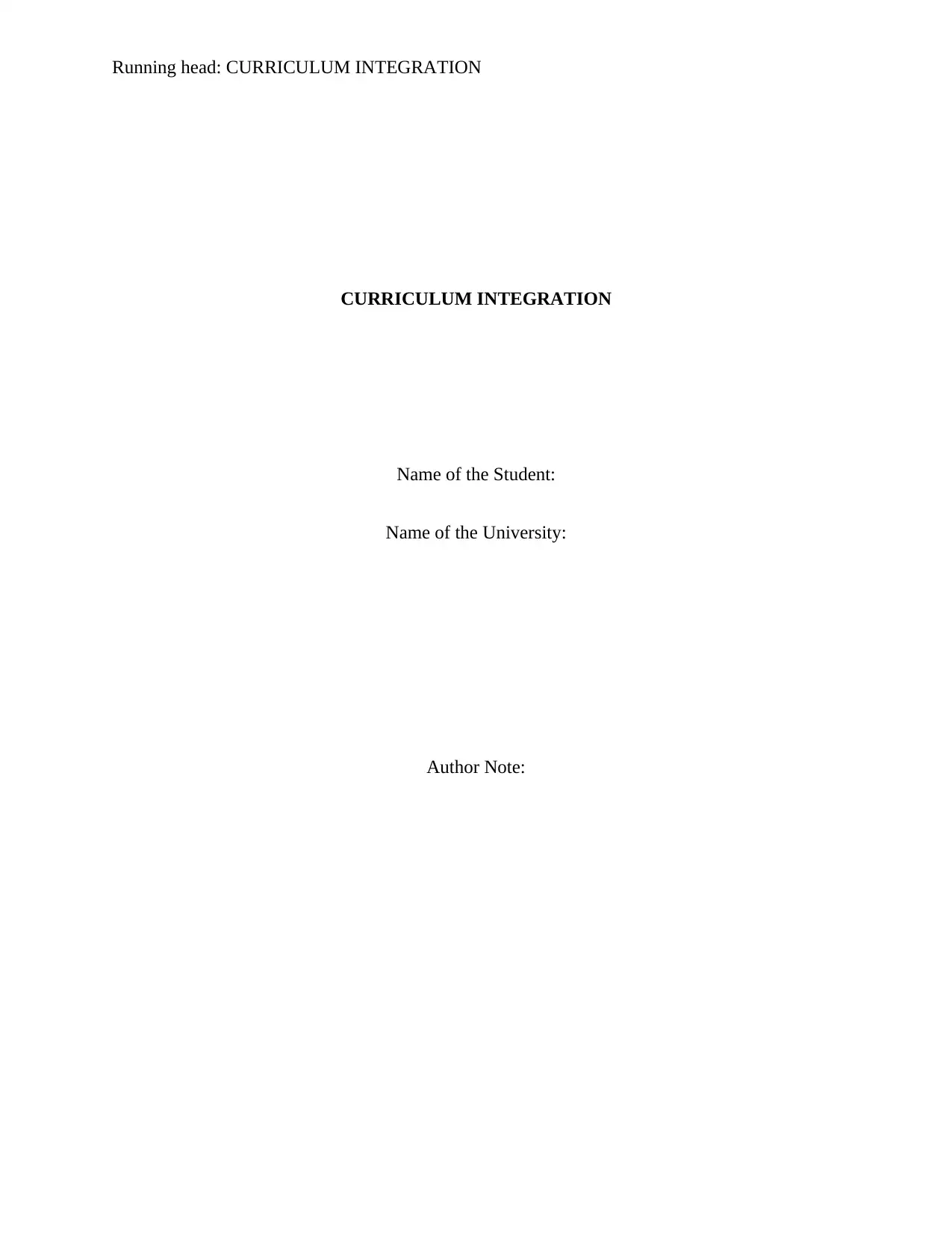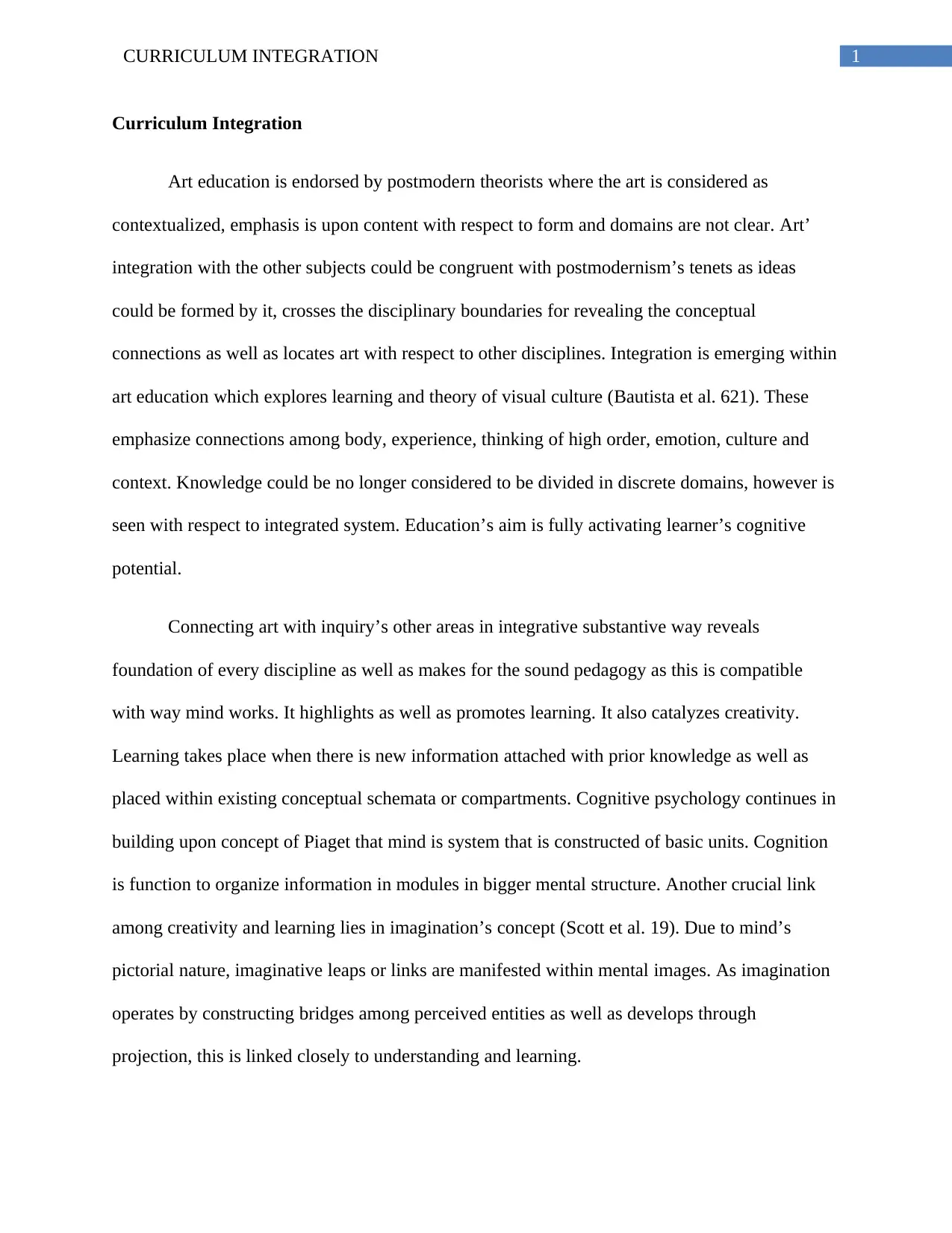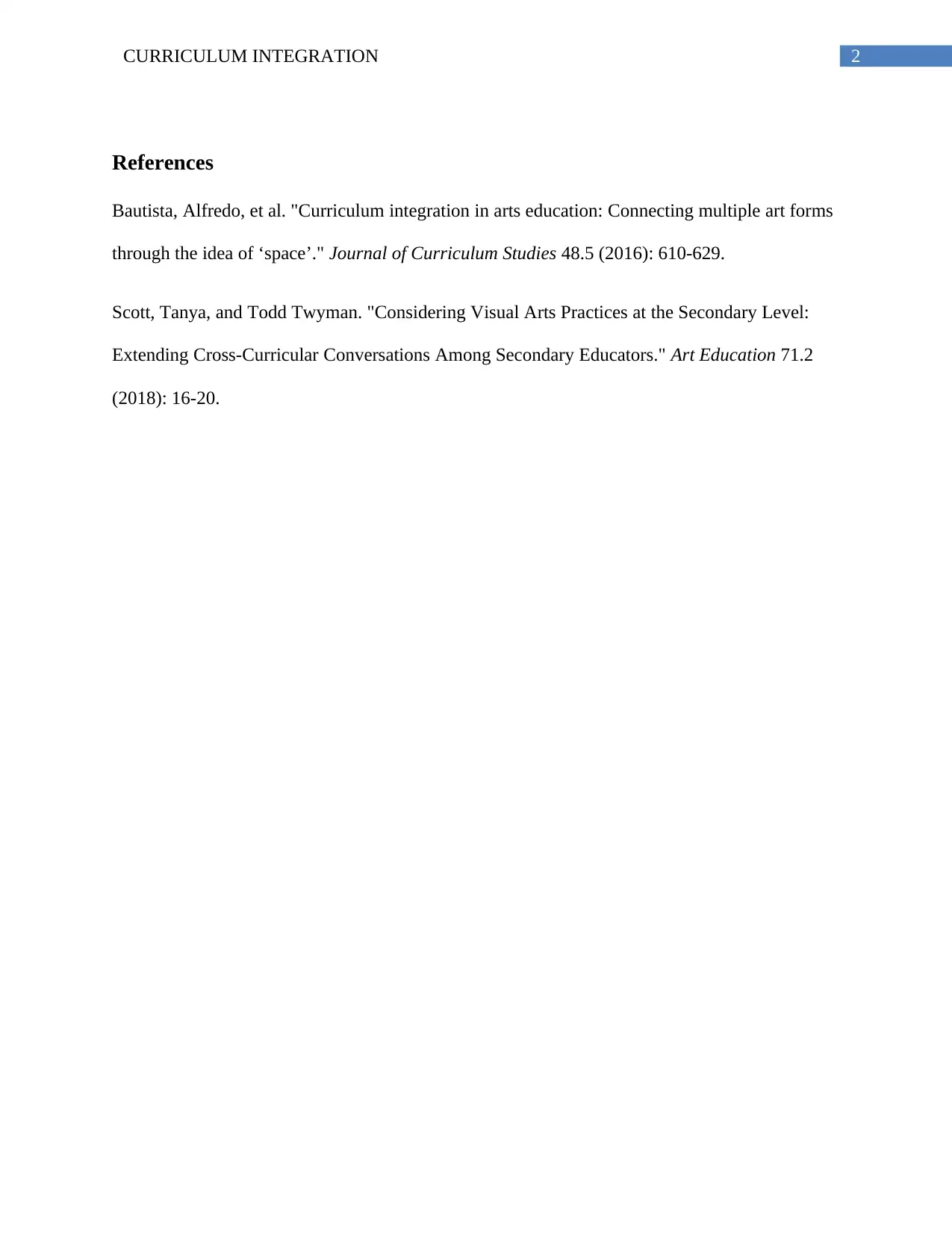Curriculum Integration in Art Education: Comprehensive Report
VerifiedAdded on 2022/08/12
|3
|417
|31
Report
AI Summary
This report explores the concept of curriculum integration within art education, highlighting its alignment with postmodernist principles and its emphasis on connecting art with other subjects. The report discusses how art education fosters learning by connecting it with prior knowledge and imagination. It explores the role of cognitive psychology in understanding how the mind processes information and the importance of imagination in the learning process. The report also emphasizes the integration of art with other disciplines and how this integration enhances learning and promotes creativity. References are provided to support the ideas presented in the report.
1 out of 3




![[object Object]](/_next/static/media/star-bottom.7253800d.svg)